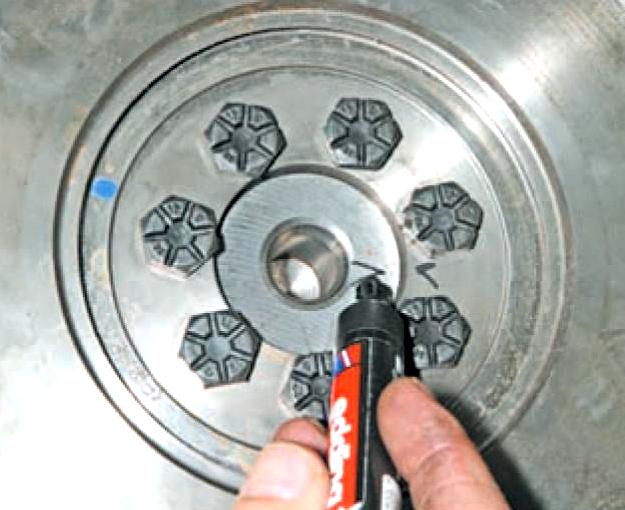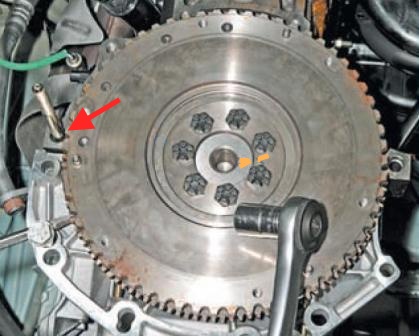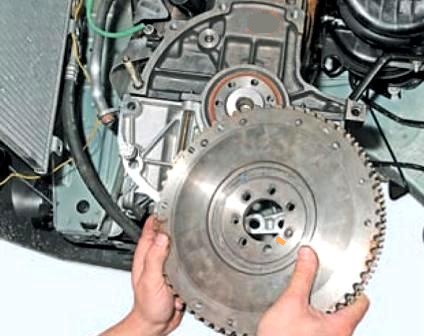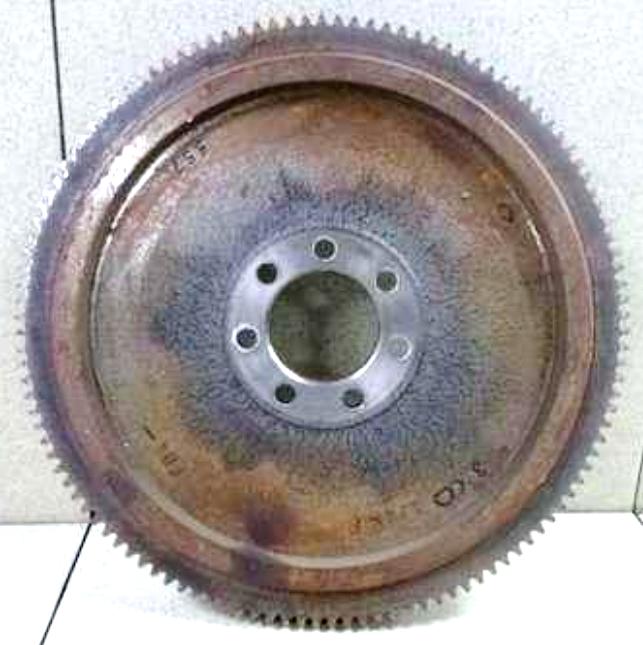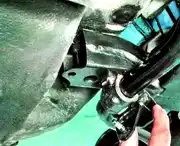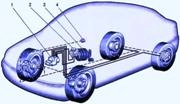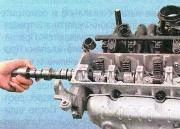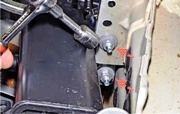The flywheel is removed to replace the crankshaft rear oil seal, to replace it if the toothed rim that serves to start the engine with a starter is damaged, and to grind the surface for the clutch disc
You will need - the tools needed to remove the gearbox and clutch, as well as a 17" socket and a screwdriver.
Remove the gearbox (see "Removing and installing the gearbox") and the clutch (see "Removing and installing the clutch").
Mark the relative position of the flywheel and crankshaft in any way.
The flywheel can only be installed on the crankshaft in one position, since one of the holes in the flywheel and the crankshaft is located asymmetrically (has an angular offset)
To facilitate the installation of the flywheel, we recommend marking the relative position of the parts
Remove the six flywheel mounting bolts while holding the flywheel from turning with a screwdriver.
Remove the flywheel.
Check the condition of the flywheel rim teeth and replace the flywheel if damaged.
Replace or repair the flywheel if the mating surfaces of the clutch disc or crankshaft flange show scratches and scratches.
You can check and repair the flywheel in a workshop with special equipment.
Flywheel runout, measured at the toothed rim, must not exceed 0.5 mm.
To remove deep scratches and scuffs, the contact surface of the driven disk can be sanded, while the layer of metal removed should not exceed 0.3 mm.
Install the flywheel in accordance with the marked marks and all removed components in the reverse order of removal.
Lubricate the threads of the flywheel mounting bolts with an anaerobic threadlocker such as "Loctite Frenetanch" or similar.
Tighten the bolts evenly and crosswise to 65 Nm (6.5 kgf/m).
Be sure to replace the flywheel mounting bolts with new ones. Reuse is not allowed







